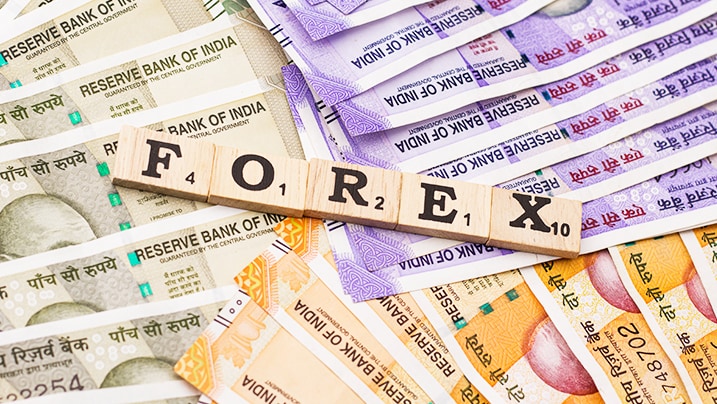
The company's dividend payout ratio is an indicator of its financial strength. It is the ratio of net income distributed by a company in dividends. A high payout ratio translates to more dividends for stockholders. You should look for companies with high payout rates in an age where shareholders' money is the king. Here are the steps to calculate a payout ratio for dividends to evaluate a company's financial strength.
The dividend payout ratio measures a company's sustainability.
The Dividend payout ratio (DPR), a financial indicator, is used to determine if a company’s business model is sustainable. High dividend yields look appealing but suddenly the company must reduce the dividend. This could lead to a reduction in the dividend and possibly a loss of capital. A high DPR could indicate a potential warning sign.

It is a measure of a company's financial strength
Concerns about their company's financial stability are a major concern for business owners. The ability to manage costs and maximize efficiency is key to a company's financial strength. A company's financial strength can be measured by many metrics. How can you determine which metrics are most important? Start by identifying your key drivers, such as sales growth, profitability and control of costs. These factors will help to determine which metrics to use.
It is a measure for maturity
The capability-maturity model (CMM) is a set of process areas and measures that are used to determine the organization's maturity level. Some of these process areas include project integration management, planning, monitoring, and control. This process-maturity index may be used for different industries or continents. These indexes are related to organizational leadership styles. Companies that achieve a high level of maturity may be better equipped to handle more complex and uncertain environments.
It is a measure to financial strength
For many, a company's financial stability is a crucial concern. Companies thrive on efficiency, cost control, and productivity. But how can you tell if your company is financially sound? The type of business, the stage it is at in its lifecycle, as well as its goals and economic environment, will all impact how this answer works. A company's financial health can be assessed by measuring three key areas, namely sales growth, profitability and cost control.

It is a measure of sustainability
The ecological footprint, which combines both the environmental and economic aspects of sustainability, is a measure that measures how sustainable a place is. This is the area of productive soil and water ecosystems required to produce and assimilate resources. An ecological footprint is a way of comparing the value of different project. To assess the environmental impact of a building, for example, we must calculate how much it will take to build it.
FAQ
Can bonds be traded
Yes, they do! They can be traded on the same exchanges as shares. They have been doing so for many decades.
You cannot purchase a bond directly through an issuer. They must be purchased through a broker.
Because there are fewer intermediaries involved, it makes buying bonds much simpler. This means that you will have to find someone who is willing to buy your bond.
There are several types of bonds. Different bonds pay different interest rates.
Some pay interest quarterly while others pay an annual rate. These differences make it easy to compare bonds against each other.
Bonds are great for investing. Savings accounts earn 0.75 percent interest each year, for example. The same amount could be invested in a 10-year government bonds to earn 12.5% interest each year.
If you put all these investments into one portfolio, then your total return over ten-years would be higher using bond investment.
How do I choose an investment company that is good?
You should look for one that offers competitive fees, high-quality management, and a diversified portfolio. Commonly, fees are charged depending on the security that you hold in your account. Some companies have no charges for holding cash. Others charge a flat fee each year, regardless how much you deposit. Others charge a percentage of your total assets.
It is also important to find out their performance history. Companies with poor performance records might not be right for you. Avoid companies that have low net asset valuation (NAV) or high volatility NAVs.
It is also important to examine their investment philosophy. Investment companies should be prepared to take on more risk in order to earn higher returns. If they aren't willing to take risk, they may not meet your expectations.
How are securities traded
The stock market allows investors to buy shares of companies and receive money. In order to raise capital, companies will issue shares. Investors then purchase them. Investors then resell these shares to the company when they want to gain from the company's assets.
Supply and demand are the main factors that determine the price of stocks on an open market. The price of stocks goes up if there are less buyers than sellers. Conversely, if there are more sellers than buyers, prices will fall.
There are two ways to trade stocks.
-
Directly from company
-
Through a broker
What is the role and function of the Securities and Exchange Commission
SEC regulates securities brokers, investment companies and securities exchanges. It enforces federal securities regulations.
Why is a stock called security.
Security is an investment instrument, whose value is dependent upon another company. It can be issued by a corporation (e.g. shares), government (e.g. bonds), or another entity (e.g. preferred stocks). The issuer promises to pay dividends and repay debt obligations to creditors. Investors may also be entitled to capital return if the value of the underlying asset falls.
What are the advantages of investing through a mutual fund?
-
Low cost - purchasing shares directly from the company is expensive. Purchase of shares through a mutual funds is more affordable.
-
Diversification is a feature of most mutual funds that includes a variety securities. When one type of security loses value, the others will rise.
-
Professional management – professional managers ensure that the fund only purchases securities that are suitable for its goals.
-
Liquidity is a mutual fund that gives you quick access to cash. You can withdraw your funds whenever you wish.
-
Tax efficiency - Mutual funds are tax efficient. As a result, you don't have to worry about capital gains or losses until you sell your shares.
-
Purchase and sale of shares come with no transaction charges or commissions.
-
Mutual funds are simple to use. All you need is a bank account and some money.
-
Flexibility - you can change your holdings as often as possible without incurring additional fees.
-
Access to information- You can find out all about the fund and what it is doing.
-
Investment advice – you can ask questions to the fund manager and get their answers.
-
Security - you know exactly what kind of security you are holding.
-
Control - You can have full control over the investment decisions made by the fund.
-
Portfolio tracking - You can track the performance over time of your portfolio.
-
Easy withdrawal - it is easy to withdraw funds.
There are some disadvantages to investing in mutual funds
-
Limited selection - A mutual fund may not offer every investment opportunity.
-
High expense ratio. The expenses associated with owning mutual fund shares include brokerage fees, administrative costs, and operating charges. These expenses can impact your return.
-
Lack of liquidity - many mutual fund do not accept deposits. They must be bought using cash. This limit the amount of money that you can invest.
-
Poor customer service - There is no single point where customers can complain about mutual funds. Instead, you must deal with the fund's salespeople, brokers, and administrators.
-
It is risky: If the fund goes under, you could lose all of your investments.
Statistics
- Individuals with very limited financial experience are either terrified by horror stories of average investors losing 50% of their portfolio value or are beguiled by "hot tips" that bear the promise of huge rewards but seldom pay off. (investopedia.com)
- For instance, an individual or entity that owns 100,000 shares of a company with one million outstanding shares would have a 10% ownership stake. (investopedia.com)
- US resident who opens a new IBKR Pro individual or joint account receives a 0.25% rate reduction on margin loans. (nerdwallet.com)
- The S&P 500 has grown about 10.5% per year since its establishment in the 1920s. (investopedia.com)
External Links
How To
How to trade in the Stock Market
Stock trading is the process of buying or selling stocks, bonds and commodities, as well derivatives. The word "trading" comes from the French term traiteur (someone who buys and sells). Traders buy and sell securities in order to make money through the difference between what they pay and what they receive. This is the oldest type of financial investment.
There are many ways to invest in the stock market. There are three main types of investing: active, passive, and hybrid. Passive investors only watch their investments grow. Actively traded investors seek out winning companies and make money from them. Hybrid investors take a mix of both these approaches.
Index funds track broad indices, such as S&P 500 or Dow Jones Industrial Average. Passive investment is achieved through index funds. This method is popular as it offers diversification and minimizes risk. You just sit back and let your investments work for you.
Active investing involves selecting companies and studying their performance. An active investor will examine things like earnings growth and return on equity. They decide whether or not they want to invest in shares of the company. If they feel the company is undervalued they will purchase shares in the hope that the price rises. However, if they feel that the company is too valuable, they will wait for it to drop before they buy stock.
Hybrid investment combines elements of active and passive investing. You might choose a fund that tracks multiple stocks but also wish to pick several companies. This would mean that you would split your portfolio between a passively managed and active fund.